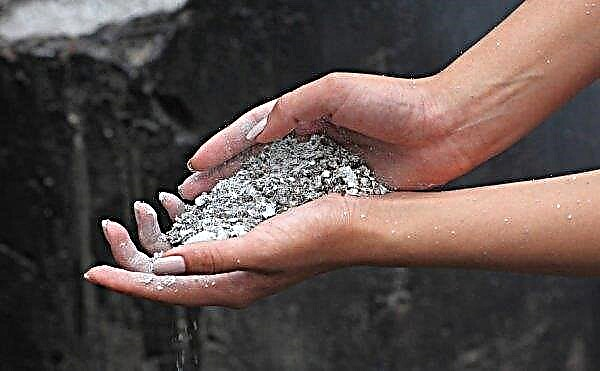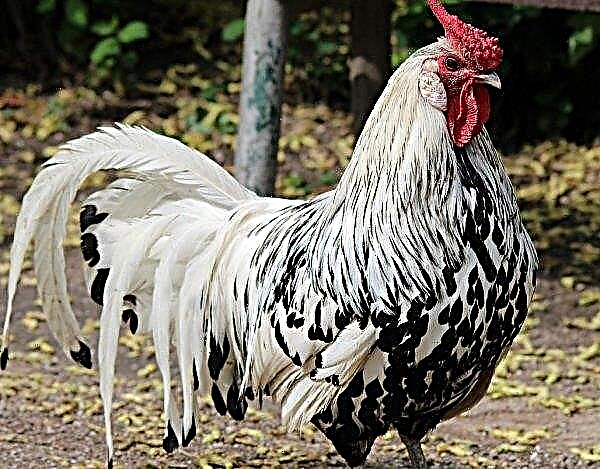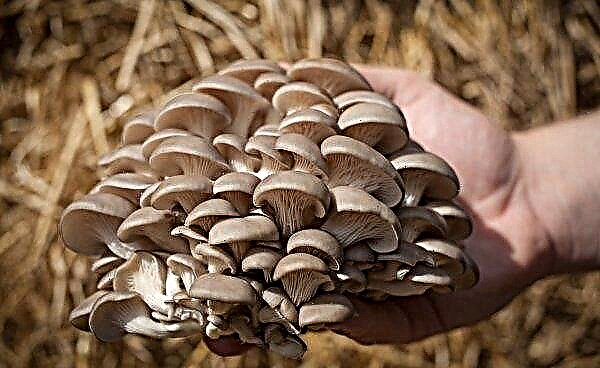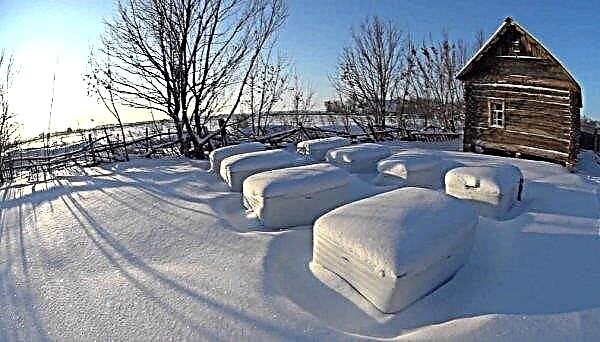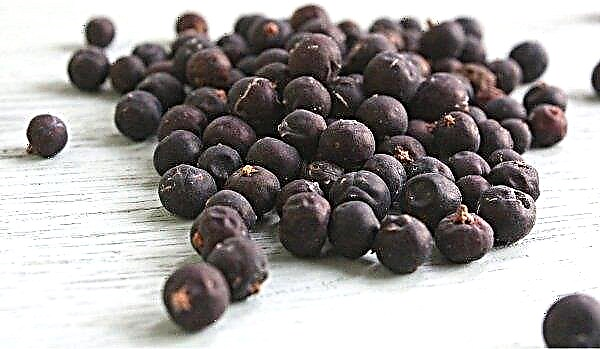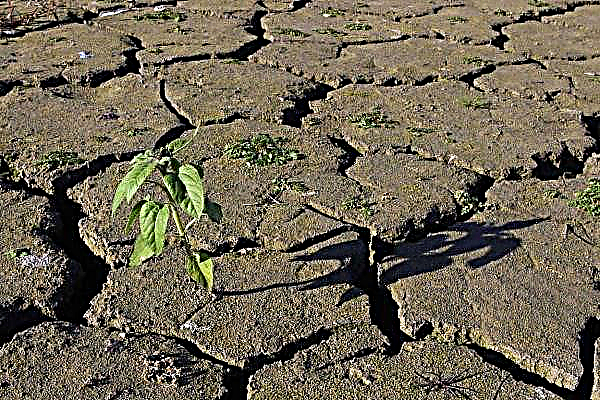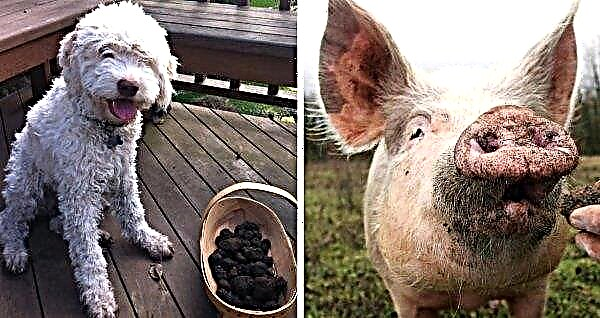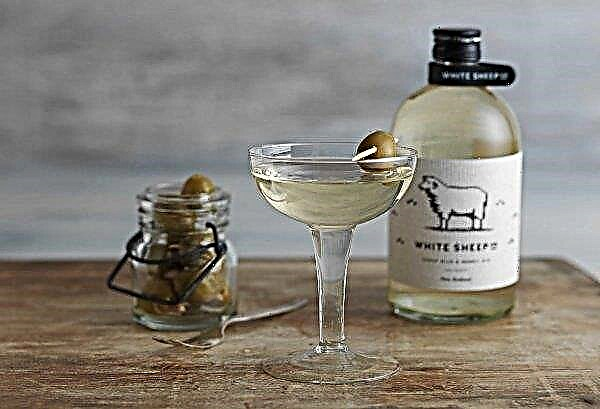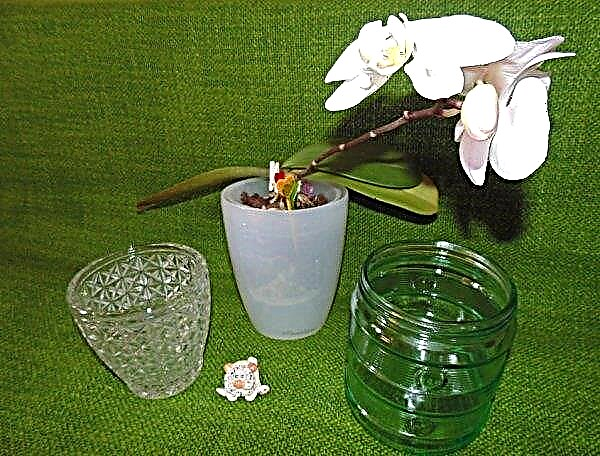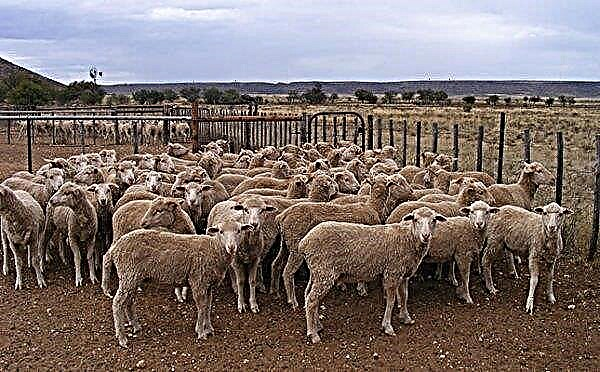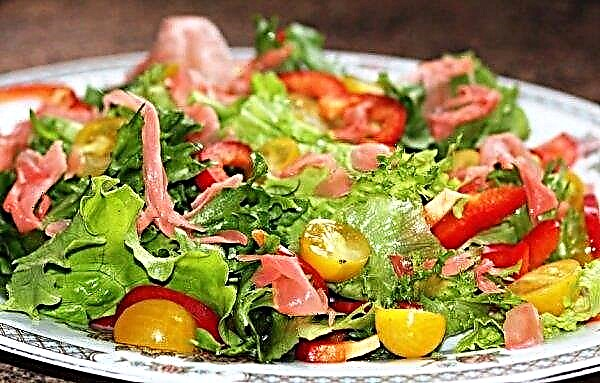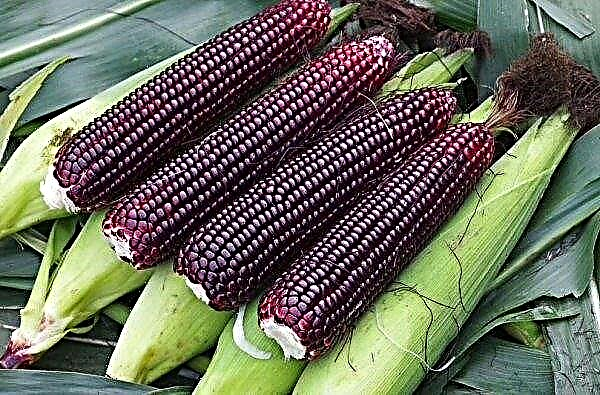Blueberries are rapidly returning their undeservedly lost popularity, because the berries of this culture are an inexhaustible storehouse of vitamins, minerals and other useful substances that are so lacking in the human body. Goldtraub 71 stands out among the variety of blueberry varieties, for more details about which read the article.
Goldtraube Blueberry Description 71
Goldtraube 71 is a breeding variety of blueberries, bred at the end of the 50s of the last century by German breeders. The variety quickly gained popularity, and the culture began to be widely used not only for personal but also for industrial purposes.
This variety variety is recognized by the following description:
- highly decorative, sprawling bushes;
- upright shoots, abundantly covered with soft, glossy, lush saturated green foliage of an elliptical shape. In autumn, the leaves turn red, which only gives the plant a decorative effect. The length of one leaf is about 6 cm;
- blueberry shrubs are quite tall and wide, shoots are scattered in different directions, form a rounded and wide crown. The culture belongs to tall: the average height of one bush reaches 2-3 m, the diameter of the bush reaches 1.5-2 m;
- in May, shrubs abundantly cover themselves with white or pale pink bell-shaped flowers. The length of one flower is about 1 cm;
- large rounded berries ripen in late July - early Augustthat form on dense hands. The average diameter of one blueberry berry is 15 mm, and its weight varies within 1.9 g. The fruits are painted in a light blue tint and covered with a bluish coating, which makes the berries dull;
- outwardly blueberry fruits resemble blueberry. The taste of blueberry fruits of this variety is sour-sweetish. But, despite the similarity with blueberry fruits, the blueberry of the breeding variety Goldtraube can even be distinguished externally due to its large size and green color of the pulp.

Goldtraube 71 has many advantages, including:
- large size of berries and their good taste;
- medium early ripening of fruits;
- simplicity of agricultural technology: the culture is unpretentious in care, does not require special efforts;
- high productivity: 2.5–3 kg of blueberry berries are harvested from one bush;
- universality of use: Goldtraube 71 fruits can be consumed both fresh and after treatments. They make excellent compotes, jams, fruit purees, jams, jellies. But not only the fruits, but also the shrub itself is universal: it is not only a fruit and berry plant, but also a decorative decoration of the garden and landscape design.

Among the disadvantages of the variety can be noted not too high winter hardiness: the culture is able to withstand the drop in temperature to -34ºС, its high demands on the soil, as well as intolerance to drought or excessive moisture.
Did you know? People call blueberries blue grapes and blueberries. You can also meet such names: drunkard, gonobob, durikh, which is explained by the mistaken opinion of people that the plant is capable of provoking headaches. But that's not true: the source of headaches — not blueberries, but Ledum, which is a constant neighbor of its shrubs in the wild.
Chemical composition
100 g of blueberry contains only 39 calories, the nutritional value of which is:
- protein part: 1 g;
- fatty part: 0.5 g;
- carbohydrate portion: 6.6 g;
- dietary fiber: 2.5 g;
- water: 88 g.
 The secret to the benefits of Goldtraube fruits is their rich vitamin and mineral balance.
The secret to the benefits of Goldtraube fruits is their rich vitamin and mineral balance.
So, in blue berries such components of vitamins are contained:
- thiamine (B1): 0.01 mg;
- riboflavin (B2): 0.02 mg;
- ascorbic (C): 20 mg;
- alpha-tocopherol (E, TE): 1.4 mg;
Blueberries are rich in the following macro- and microelements:
- potassium: 51 mg;
- calcium: 16 mg;
- magnesium: 7 mg;
- sodium: 6 mg;
- phosphorus: 8 mg;
- iron: 0.8 mg;
Did you know? Despite the outward similarity of blueberries and blueberries, blueberry fruits cannot be stained because their flesh is green.
Landing rules
Planting Goldtraube 71 is no different from planting any other garden blueberry variety. The best place for it is considered to be a site located in the sun or in partial shade, protected from winds and drafts.
 Goldtraube 71 welcomes lands rich in organic fertilizers, so it is recommended to plant green manure on the allotted area for blueberries a year before planting.
Goldtraube 71 welcomes lands rich in organic fertilizers, so it is recommended to plant green manure on the allotted area for blueberries a year before planting.
Goldtraube is a breeding variety that has high requirements for soil quality. The variety feels best in well-drained areas, the groundwater level on which passes at least 50 cm below the upper soil layer. Landing of Golbrtaube 71 in swampy or flooded areas is fraught with decay of the plant rhizome.
The ideal type of land on the site is loamy or sandy loam. On heavy soils, the plant does not take root. With regard to soil acidity, this indicator should not go beyond 3.5–5.2, otherwise one should not expect a good crop from the crop. In order to reduce the acidity of the soil, one year before planting blueberries of this variety, sulfur is recommended to be added to the soil. Landing procedures can be carried out both in the spring, and in the fall.
Important! It is forbidden to place blueberry seedlings in planting holes with a lump of earth in which they grew. The earth compacted in the container will impede the free development of the root system of the plant: the roots simply will not be able to break through this lump, which is fraught with the slow development and rapid death of the future shrub.
The Goldtraube 71 landing procedure consists of the following steps:
- Digging out landing holes with parameters of 1 m / 1 m / 0.5 m. The optimal distance between the holes is 0.8–1.6 m, between the rows - 2.6–3.5 m.
- Soaking seedlings in water for 20-30 minutes immediately before planting.
- The introduction of fertilizer mixtures into the well: peat, sand and mineral fertilizers in equal proportions. For 1 m², you need 20-30 g of this mixture.
- The placement of seedlings in the planting pits. Saplings of culture are carefully removed from the containers in which they grew, and knead an earthen ball with their hands (so that it is softened, the planting material is pre-soaked in water). Then the seedling is placed in the hole, deepened by 7 cm, very carefully straightening the rhizome. It is worth remembering that the roots of blueberries are very delicate and easily susceptible to damage. The root neck should be deepened to the ground to a level of 5 cm.
- Falling asleep holes.
- Mulching the soil around the plant trunk. As a mulch, it is recommended to use pine bark, foliage, needles, sawdust. The optimal thickness of the mulch layer is 5–7 cm.

Subtleties of care and maturity
With proper observance of all the rules of care (watering, fertilizing, pruning, preparing for winter), Bluetraube 71 will thank the blueberries Goldtraube with high decorative bushes and a plentiful harvest. Since Goldtraube belongs to mid-season varieties, the ripening of the berries of the crop occurs in the second or third decade of July. Blueberry fruits do not ripen at the same time: fruiting lasts for a month. It is necessary to pick only that blueberry, which easily and without the release of juice comes off the brush.
The largest, largest and most attractive berries are those that ripened during the first and second harvest, they also reach maximum weight - up to 2 g one berry. With each subsequent harvest, the fruits will become smaller, but not much.
Watering
One of the main requirements of Goldtraube's care is quality and timely watering. Watering the crop is necessary once a week, bringing 10–20 liters of water under one shrub (depending on its size and environmental conditions: in the heat, water the bush using the maximum amount of water). During fruiting, shrubs are recommended to be watered twice a week, but care must be taken to ensure that the water beneath them does not stagnate.

Top dressing
Goldtraube shrub needs nitrogen fertilizer. For the season, it is necessary to add 70–90 g of nitrogen-containing substances, distributing them correctly: 40% is added in the period before the onset of sap flow, 35% - in early May and 25% - in early July. The following nitrogen supplementation will be carried out with the onset of the next spring.
Important! Do not overdo it with nitrogen fertilizers, because their excess is fraught with the fact that the crop will build up green mass instead of the crop.
In two stages, blueberry bushes are fertilized with superphosphate: 100 g in the summer (July) and 100 g in the autumn (September). The amount of fertilizer is indicated on 1 shrub. After fruiting, the plants must be fed with zinc sulfate and potassium sulfate (2 g of each substance per bush). Also during this period, dressing with magnesium sulfate (15 g of substance / 1 bush) is advisable.

Pollination
Since Goldtraube 71 belongs to varieties with a cross type of pollination, it is recommended that, in addition to this variety, another 2–3 other subspecies be planted on the site, which will increase the blueberry yield.
Winter preparations
In conditions with severe winters with little snow, it is worth preparing blueberry shrubs well for wintering. Preparing for winter is carried out a week or two before the onset of frost. The shoots are neatly bent to the ground with a wire or twine and fixed in this position. Then they cover the bush with burlap or agrofibre and cover it with spruce top.
 It is not recommended to cover the Goldtraube bushes with a film, since the plant will not be able to breathe
It is not recommended to cover the Goldtraube bushes with a film, since the plant will not be able to breathe
When it snows, something like snowdrifts needs to be done over the blueberry landings. It is necessary to free plants from winter shelter in early spring after the retreat of cold weather.
Pests and blueberry diseases
Goldtraube can be affected by attacks from the following diseases and pests:
- stalk cancer. Brown spots that form on branches are considered a signal of the onset of the disease. The spots quickly increase in diameter, the damaged bark begins to peel off, and ulcers appear in place of the spots. The disease spreads to the foliage and soon leads to the death of the entire shrub. Treatment of a plant with a solution "Topsina" or "Euparen". It is necessary to spray before flowering twice for two weeks and after the end of the fruiting period;
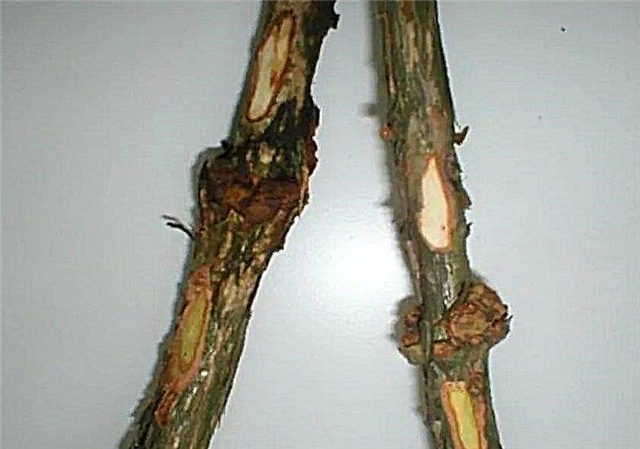
- phomopsis. Like stem cancer, it is a fungal disease. Phomopsis can be recognized by twisting the tops of the bushes and brown spots on the foliage. Both the affected foliage and tops soon dry out. The diseased parts of the plant must be immediately removed and burned, and the bushes treatedTopsin», «Euparen" or "Fundazole". The procedure is identical to treatment against stem cancer;
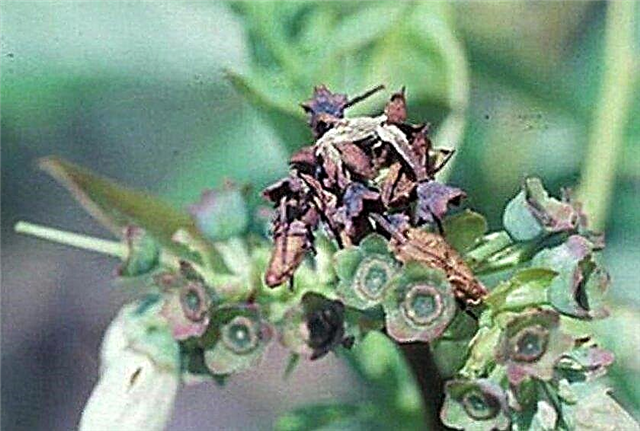
- moniliosis - a fungal disease of branches, leaves, flowers and fruits of blueberries, the symptoms of which resemble the symptoms of frostbite: diseased parts of the plant turn yellow and die. The diseased parts of the plant must be removed and burned, and the bushes treated with a solution of Bordeaux fluid or fungicides ("Fundazole», «Topsin»);
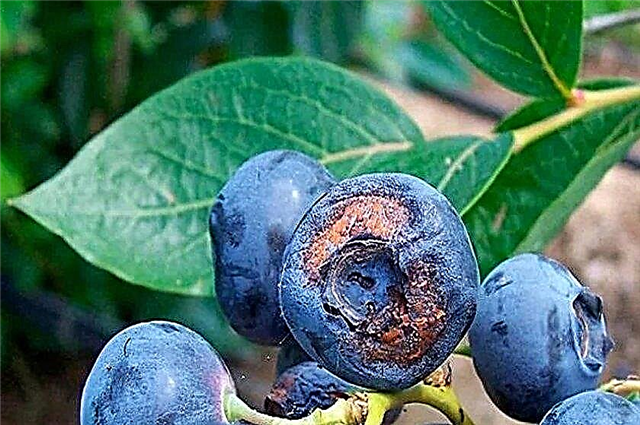
- anthracnose - Another fungal disease, fraught not only with loss of crops, but also with the death of culture. Brown spots formed on the foliage and orange spots on the fruits signal the disease. To eliminate the disease, it is necessary to remove the diseased parts and treat the culture with fungicides ("Euparen», «Fundazole»);
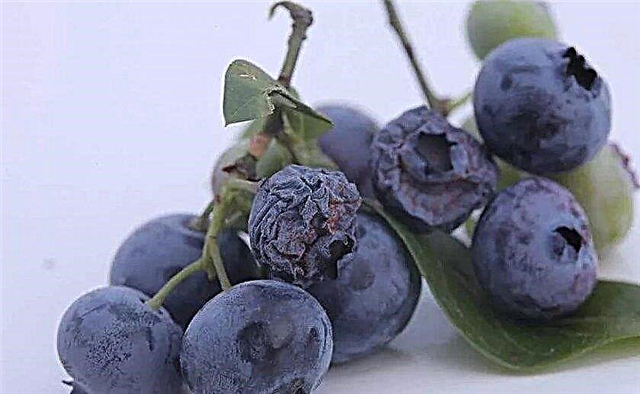
- triangular flat leaflet - a small butterfly, whose caterpillars fold foliage with the help of a web. To eliminate the uninvited guest, you need to destroy the caterpillars in the folded leaves and process the bushes "Fufanon», «Kemifos"Or other insecticide;

- birds - attack the blueberry crop. To protect your landings from insatiable visitors, it is necessary to cover the bushes with a special net or hang foil on them, the luster of which will frighten off intruders.
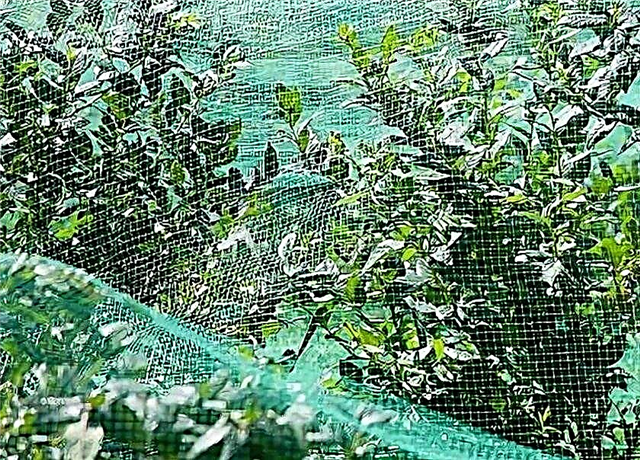
As you can see, with a strong desire and small efforts on your own summer cottage you can grow a useful and expensive berry - Goldtraube 71 blueberries. But, before you engage in this type of activity, carefully read the features and requirements of this culture.







